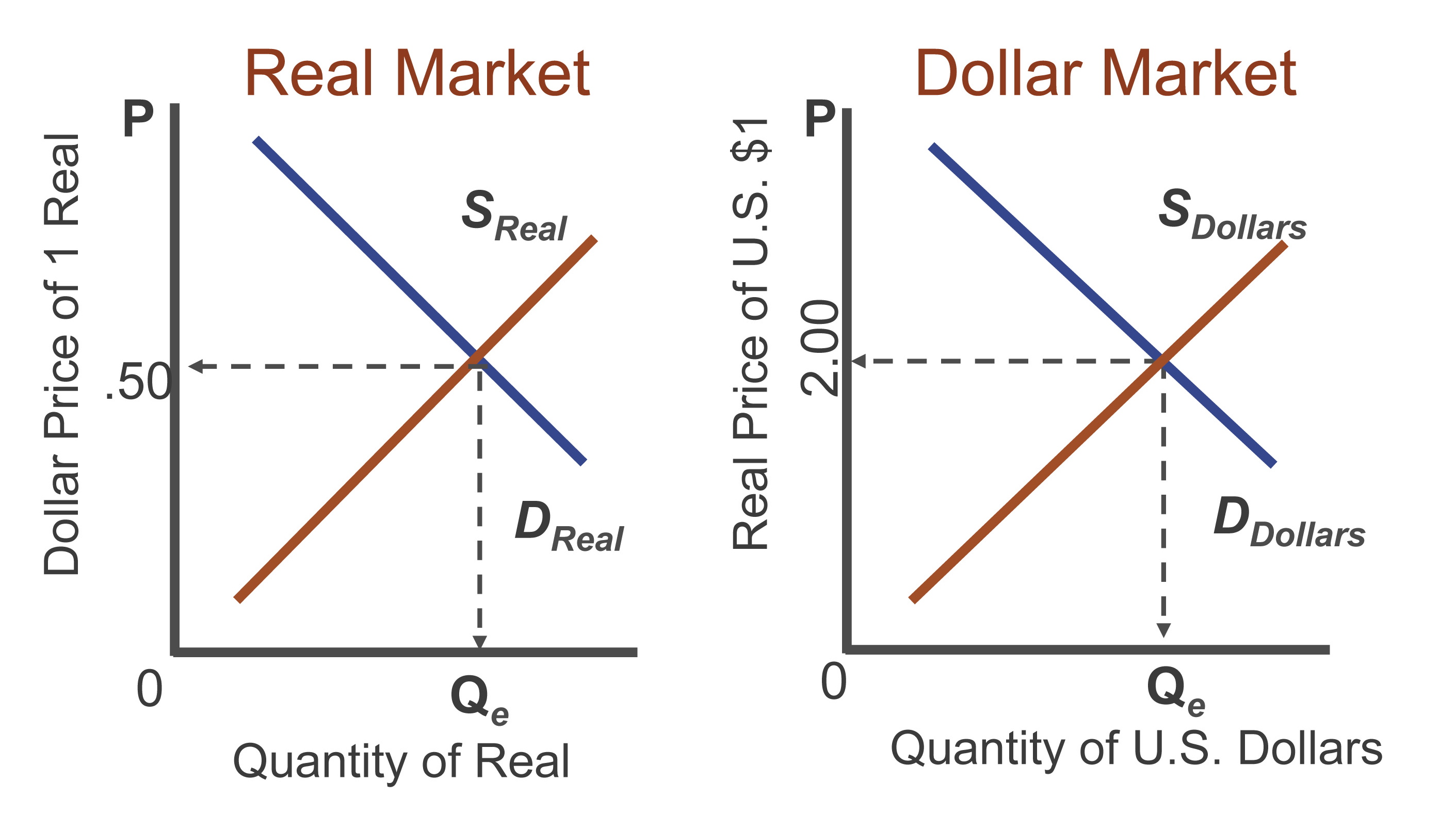Foreign Exchange: the buying and selling of currency.
- Ex. In order to purchase souvenirs in France, it is first necessary for Americans to sell (supply) their dollars and buy (demand) Euros)
- The exchange rate (e) is determined in the foreign currency markets.
- Simply put, the exchange rate is the price of a currency.
- Do not try to calculate the exact exchange rate.
Tips:
- Always change the D line on one currency graph, the S line on the other currency's graph.
- Move the lines of the two currency graphs in the same direction (right or left) and you will have the correct answer.
- If D on one graph increases, S on the other will also increase.
- If D moves to the left, S will move to the left on the other graph.
Changes in Exchange Rates:
- Exchange rates (e) are a function of the supply and demand for currency.
- An increase in the supply of a currency will make it cheaper to buy one unit of that currency.
- A decrease in supply of a currency will make it more expensive to buy one unit of that currency.
- An increase in demand for a currency will make it more expensive to buy one unit of that currency.
- A decrease in demand for a currency will make it cheaper to buy one unit of that currency
Appreciation of a currency occurs when the exchange rate of that currency increases (e goes up)
Depreciation of a currency occurs when the exchange rate of that currency decreases (e goes down)
- One hundred yen used to buy one dollar. Now 50 yen buys one dollar.
- The dollar is weaker because it takes fewer Yen to buy one dollar.
Exchange Rate Determinants
- Consumer Tastes
- Relative Income
- Relative Price Level
- Speculation

No comments:
Post a Comment